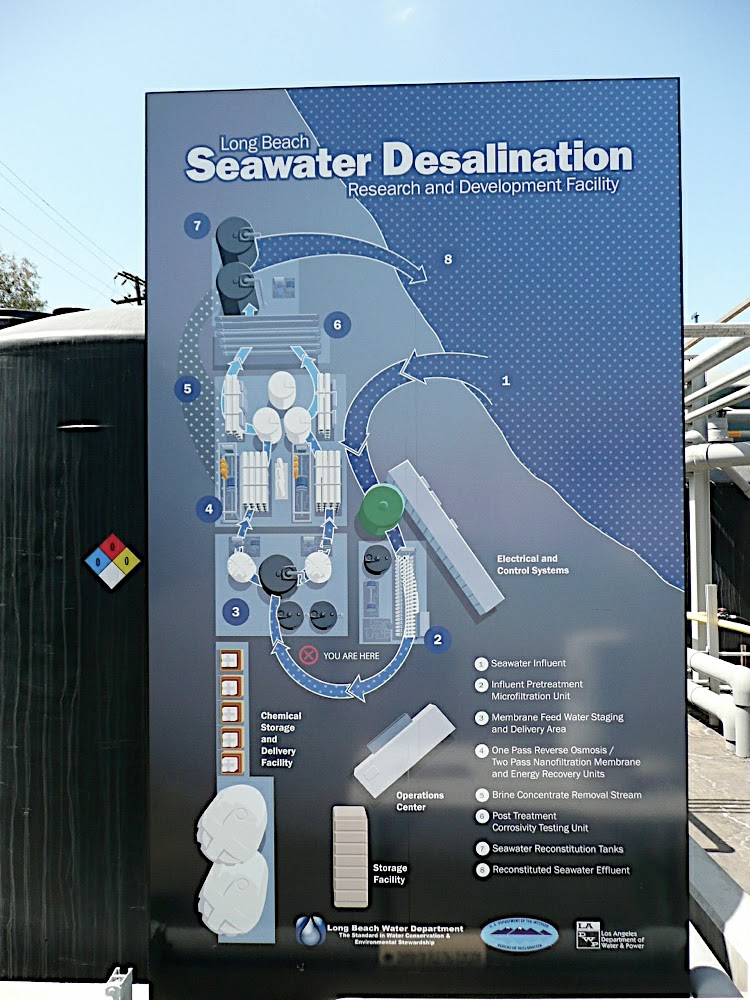According to The Economist, two Canadian engineers have developed a new way to use the sun to heat water for desalination:
Existing desalination plants work in one of two ways. Some distill seawater by heating it up to evaporate part of it. They then condense the vapor -- a process that requires electricity. The other plants use reverse osmosis. This employs high-pressure pumps to force the water from brine through a membrane that is impermeable to salt. That, too, needs electricity. Even the best reverse-osmosis plants require 3.7 kilowatt hours (kWh) of energy to produce 1,000 liter of drinking water.

Ben Sparrow and Joshua Zoshi, founders of Saltworks Technologies, claim they can produce the same amount of drinking water using less than 1 kWh. That's less than 1/3 the required energy of the best-performing traditional desalination models. This new process uses concentration gradients of salinity to get its energy. Their process, in more detail:
The process begins by spraying seawater into a shallow, black-bottomed pond, where it absorbs heat from the atmosphere. The resulting evaporation increases the concentration of salt in the water from its natural level of 3.5% to as much as 20%. Low-pressure pumps are then used to pipe this concentrated seawater, along with three other streams of untreated seawater, into the desalting unit. ... this is a type of electrical circuit. Instead of electrons carrying the current, though, it is carried by electrically charged atoms called ions. Salt is made of two ions: positively charged sodium and negatively charged chloride. These flow in opposite directions around the circuit. Each of the four streams of water is connected to two neighbors by what are known as ion bridges. These are pathways made of polystyrene that has been treated so it will allow the passage of only one sort of ion -- either sodium or chloride. Sodium and chloride ions pass out of the concentrated solution to the neighboring weak ones by diffusion though these bridges (any chemical will diffuse from a high to a low concentration in this way). The trick is that as they do so, they make the low-concentration streams of water electrically charged. The one that is positive, because it has too much sodium, thus draws chloride ions from the stream that is to be purified. Meanwhile, the negative, chloride-rich stream draws in sodium ions. The result is that the fourth stream is stripped of its ions and emerges pure and fresh.
Why is desalination important?
Saltworks cites some statistics on water scarcity:
- By 2025 global water usage is projected to increase by at least 50 per cent.
- With the world's population over 6 billion and expected to reach almost 8 billion by 2025, the need to find and secure new fresh water sources is very apparent.
- Many fresh water sources have been polluted to the point where they are too toxic for human use. Some 300-500 million tons of heavy metals, solvents, toxic sludge, and other waste accumulate in oceans, seas, lakes, rivers, and groundwater each year from industry.
- Water pollution is a problem for about half of the world's population. Each year, water borne diseases affect over 250 million people and claim the lives of 1.4 million children.
Obviously, they hope their desalination breakthrough will help address this problem. And looking at those statistics, so should you.
Heard of any other breakthroughs in this field? What are your thoughts on desalinization?
image: courtesy of cp http://bit.ly/d5LgQC
Related articles by Zemanta
- Sun-Assisted Desalination (technologyreview.com)
- Desalination technology increases naval capabilities (scienceblog.com)
- Salinity (slideshare.net)
- DEWA - desalination water (slideshare.net)



Comments
Flattery makes friends and truth makes enemies.